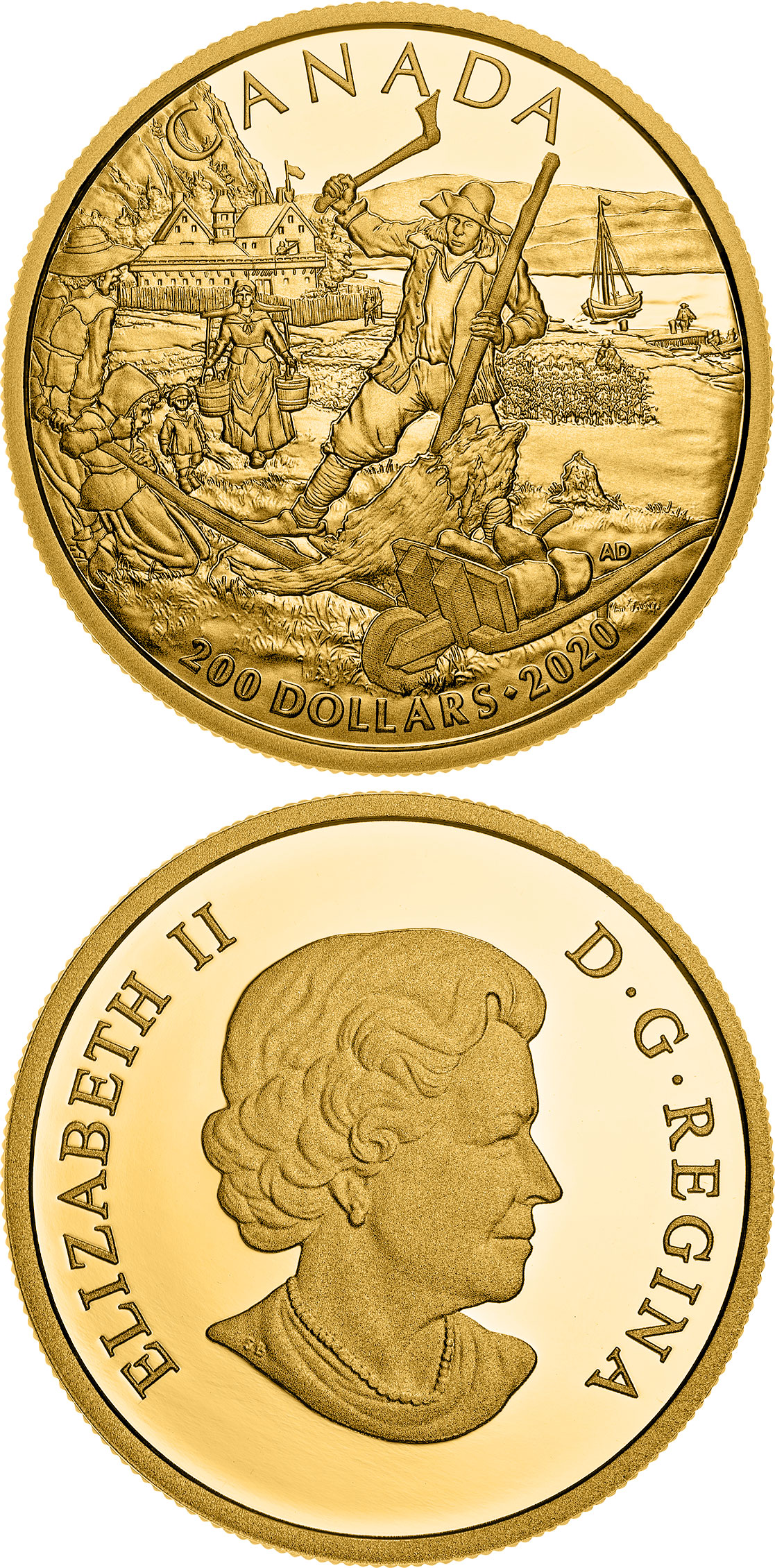200 dollars - New France
Series: Canada - Early Canadian History

In the early 17th century, the first colonies of New France began to appear as Europeans shifted their attention away from fish that could be harvested at sea to a new source of wealth that resided on shore: fur. Fur-trading posts required permanent, fortified settlements with a variety of people to provide the skills, services and products necessary to sustain the community. When Samuel de Champlain began building his Habitation at today’s Quebec City, he knew that two critical services could be procured from one man: Louis Hébert.
Champlain had met Hébert on two previous expeditions. Hébert was an apothecary and an agriculturalist, and he accepted the position as the colony’s physician and surgeon. Hébert was also given land where he agreed to plant crops so the Habitation could become self-sufficient. Hébert sailed with his family in 1617. He was the first European in New France to support himself by farming, established its first seigneurie, and was also appointed King’s Attorney by Champlain.